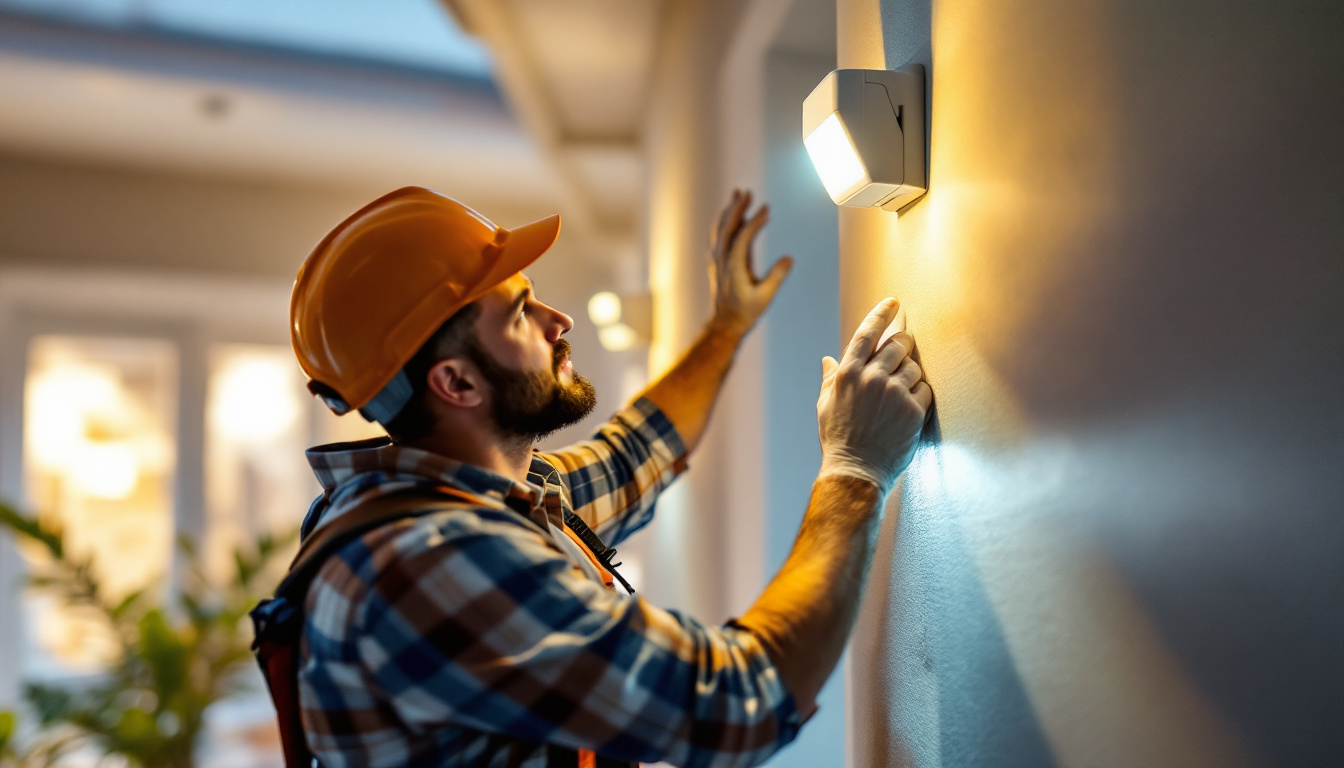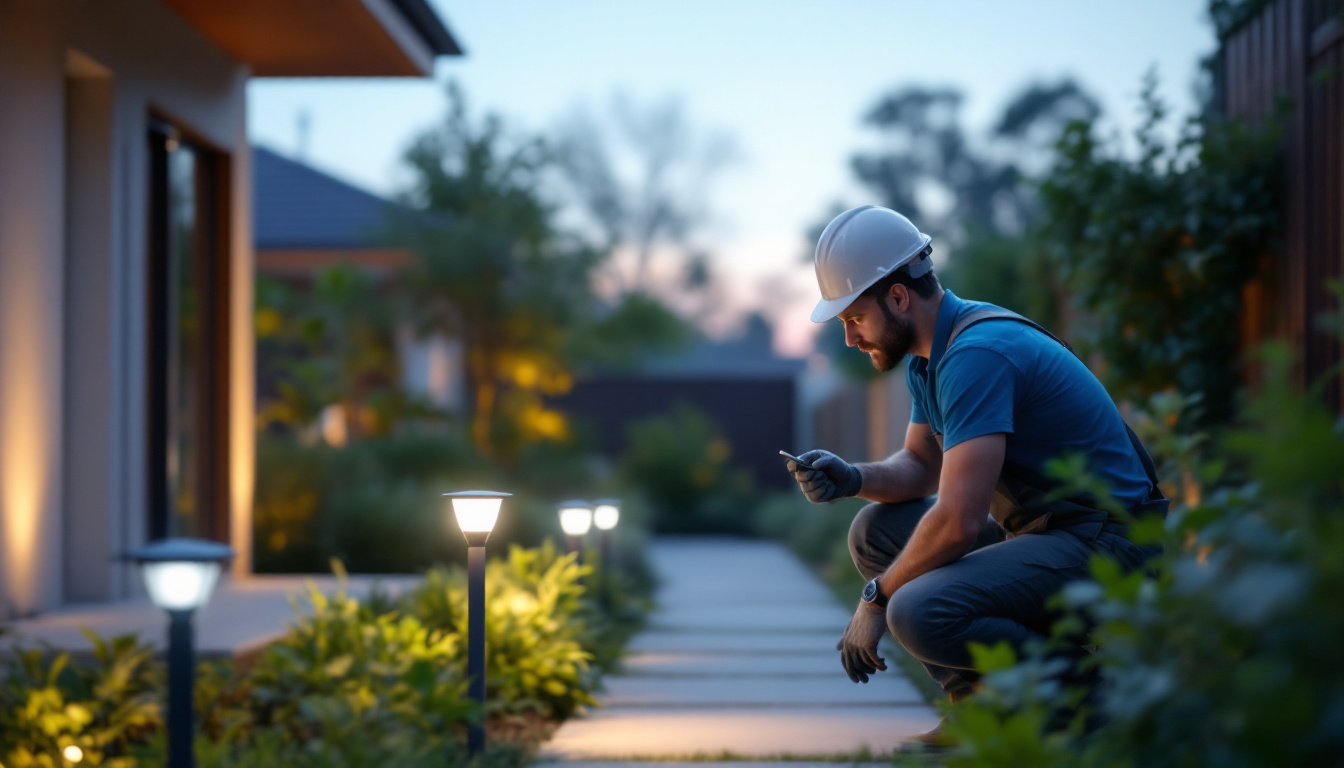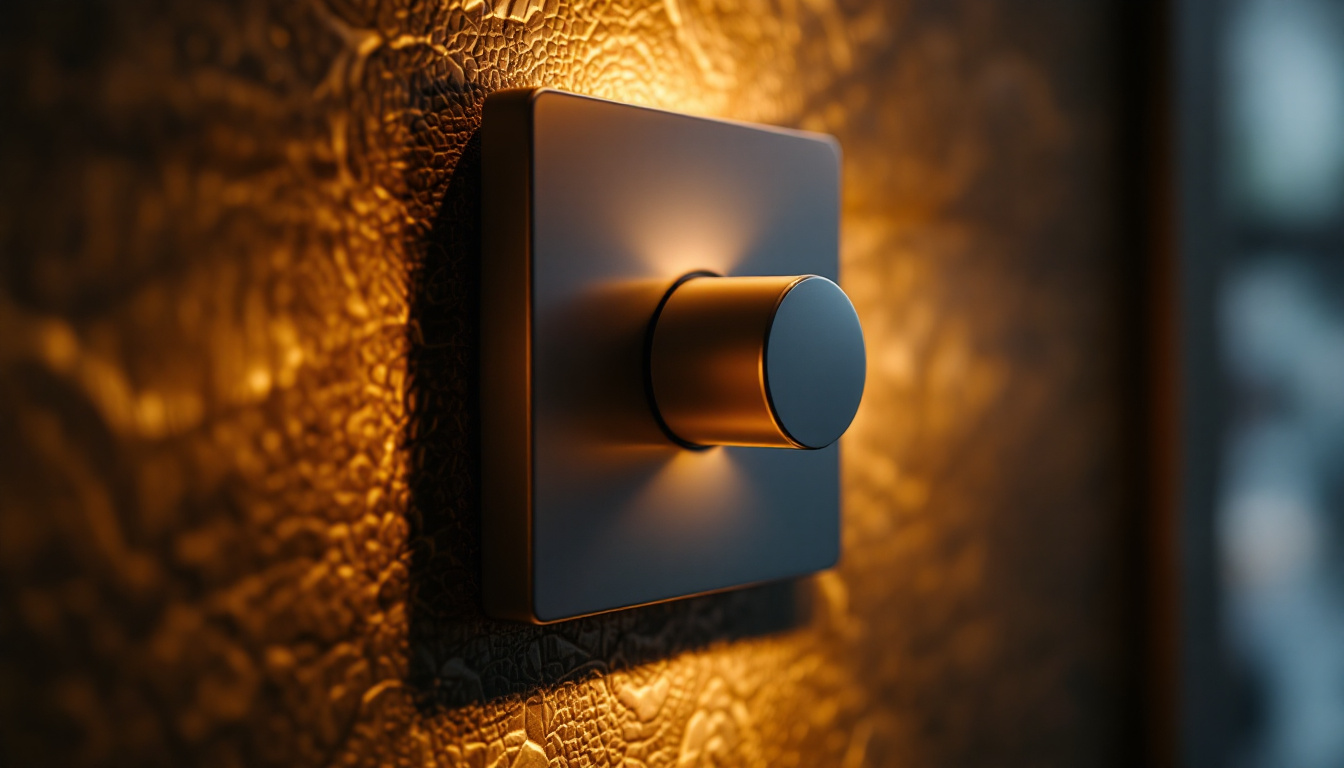

In the ever-evolving world of lighting technology, motion detectors combined with light sensors are becoming increasingly popular among homeowners and businesses alike. For lighting contractors, understanding the benefits and applications of these devices can not only enhance service offerings but also significantly boost profits. This guide delves into the advantages of motion detectors with light sensors, their applications, and how contractors can leverage these technologies to maximize their business potential.
Motion detectors are devices that sense movement within a specified area, while light sensors measure ambient light levels. When combined, these technologies create a powerful solution that enhances energy efficiency and security. This section explores the mechanics of these devices and their benefits.
Motion detectors typically use one of three technologies: passive infrared (PIR), ultrasonic, or dual technology. PIR sensors detect heat emitted by objects, making them effective for indoor and outdoor applications. Ultrasonic sensors use sound waves to detect movement, while dual technology combines both methods for increased accuracy.
When a motion detector is triggered, it can activate lighting systems to illuminate an area, providing both safety and convenience. This is especially beneficial in commercial settings where security is a priority. For instance, in large warehouses or retail spaces, motion detectors can help ensure that lights are only on when necessary, reducing energy waste and lowering operational costs. Additionally, the strategic placement of these sensors can help create a well-lit environment that deters potential intruders, enhancing overall safety.
Light sensors, on the other hand, measure the intensity of ambient light. This allows them to adjust the brightness of lighting systems accordingly. For example, if a light sensor detects sufficient natural light during the day, it can dim or turn off artificial lighting, leading to significant energy savings.
When integrated with motion detectors, light sensors ensure that lights are only activated when necessary, further enhancing energy efficiency. This combination not only reduces electricity costs but also prolongs the lifespan of lighting fixtures. Furthermore, the adaptability of light sensors can be particularly advantageous in environments with fluctuating light conditions, such as offices with large windows or areas surrounded by trees. In these scenarios, the sensors can dynamically adjust to changes in natural light, maintaining optimal illumination levels without manual intervention. This not only contributes to a more comfortable atmosphere but also supports sustainable practices by minimizing reliance on artificial lighting.
Integrating motion detectors with light sensors offers numerous benefits for both contractors and their clients. Understanding these advantages can help contractors market their services more effectively and provide added value to customers.
One of the most compelling reasons to install motion detectors with light sensors is the potential for energy savings. By ensuring that lights are only on when needed, these systems can significantly reduce electricity consumption. This is particularly appealing to environmentally conscious clients who are looking to minimize their carbon footprint.
Moreover, energy-efficient systems can lead to lower utility bills, making them an attractive option for both residential and commercial clients. As energy costs continue to rise, the demand for such solutions is likely to increase, providing contractors with a lucrative opportunity. Additionally, many regions offer incentives or rebates for energy-efficient upgrades, further enhancing the financial appeal of these installations. By leveraging these incentives, contractors can present a compelling case to clients, illustrating not just the immediate savings but also the long-term financial benefits of investing in energy-efficient technology.
Security is a top concern for many property owners. Motion detectors provide an added layer of protection by illuminating areas when movement is detected, which can deter potential intruders. This feature is especially valuable for outdoor lighting applications, such as in parking lots, pathways, and entrances.
By promoting the security benefits of motion detectors with light sensors, contractors can position themselves as providers of comprehensive safety solutions, appealing to a broader customer base. Furthermore, these systems can be integrated with modern security cameras and alarm systems, creating a cohesive security network that not only alerts homeowners to movement but also captures footage for later review. This synergy between lighting and security technology enhances the overall safety profile of a property, making it a more attractive option for clients who prioritize safety and peace of mind.
Clients appreciate solutions that enhance convenience and comfort. Motion detectors with light sensors provide a seamless experience, as they automatically adjust lighting based on occupancy and ambient light levels. This not only makes spaces more functional but also enhances the overall user experience.
By offering these advanced lighting solutions, contractors can improve customer satisfaction and encourage repeat business. Happy clients are more likely to refer contractors to others, further expanding their client base. Additionally, the integration of smart technology into these systems allows for remote control and monitoring via smartphones or smart home devices, adding another layer of convenience. Clients can customize their lighting preferences, set schedules, and receive notifications, all of which contribute to a more personalized and engaging experience. As technology continues to evolve, staying ahead of these trends will not only satisfy existing clients but also attract tech-savvy customers looking for innovative home solutions.
The versatility of motion detectors with light sensors makes them suitable for various applications across different sectors. Understanding these applications can help contractors identify potential markets and tailor their services accordingly.
In residential settings, motion detectors with light sensors can be used for outdoor lighting, such as porch lights, garden lights, and driveway illumination. Homeowners often seek solutions that enhance safety while also providing convenience. By installing these systems, contractors can help clients feel more secure in their homes.
Additionally, indoor applications such as hallways, bathrooms, and utility rooms can benefit from motion-activated lighting. This is particularly useful in homes with children or elderly residents, where safety and ease of access are paramount.
For commercial properties, the applications are even broader. Motion detectors with light sensors can be employed in offices, retail spaces, warehouses, and parking lots. In these environments, energy efficiency and security are critical considerations.
Contractors can offer tailored solutions that meet the specific needs of businesses, such as programmable settings that allow for different lighting scenarios based on occupancy patterns. This customization can lead to increased client satisfaction and loyalty.
In industrial settings, motion detectors with light sensors can enhance safety and efficiency. For example, in manufacturing facilities, these devices can illuminate work areas only when personnel are present, reducing energy waste and improving safety standards.
Moreover, these systems can be integrated with other safety protocols, such as alarms and surveillance cameras, creating a comprehensive security solution that meets the rigorous demands of industrial operations.
For lighting contractors, understanding the installation process is crucial to providing a seamless experience for clients. This section outlines key considerations and best practices for installation.
Before installation, contractors must select the appropriate motion detectors and light sensors based on the specific needs of the client. Factors such as the size of the area, the type of lighting fixtures, and the intended use of the space should all be considered.
Additionally, compatibility with existing systems is essential. Contractors should ensure that the selected devices can integrate smoothly with current lighting setups, whether they are traditional or smart systems.
Placement of motion detectors and light sensors is critical for optimal performance. Sensors should be positioned to cover the intended area effectively, taking into account potential obstructions and the angle of detection.
Configuration settings, such as sensitivity levels and time delays, should also be adjusted to suit the specific environment. Properly configuring these settings can prevent false triggers and ensure that lights activate only when necessary.
After installation, thorough testing is essential to ensure that the system functions as intended. Contractors should verify that motion detection and light sensor responses are accurate and reliable.
Regular maintenance is also crucial for long-term performance. Contractors should educate clients on the importance of periodic checks and adjustments to ensure that the system continues to operate efficiently over time.
To effectively promote motion detectors with light sensors, contractors must develop a strategic marketing approach. This section provides insights into how to market these solutions effectively.
One of the most appealing aspects of motion detectors with light sensors is their potential for energy savings. Contractors should emphasize this benefit in marketing materials, showcasing case studies or testimonials that demonstrate significant cost reductions.
Utilizing visual aids, such as infographics or comparison charts, can help convey the message more effectively. Clients are more likely to invest in solutions that promise tangible financial benefits.
Security is a primary concern for many property owners. Contractors should educate clients on how motion detectors with light sensors can enhance safety and deter crime. Providing statistics on crime rates in the area and how lighting can impact security can be persuasive.
Additionally, offering demonstrations or free consultations can help clients visualize the benefits of these systems in their own spaces, making them more likely to invest.
In today’s digital age, a robust online presence is essential for any business. Contractors should leverage social media, email marketing, and search engine optimization (SEO) to reach potential clients effectively.
Creating informative blog posts, videos, and social media content that highlight the benefits and applications of motion detectors with light sensors can attract and engage a wider audience. This content can position contractors as industry experts, building trust and credibility with potential clients.
Motion detectors with light sensors present an excellent opportunity for lighting contractors to enhance their service offerings and boost profits. By understanding the technology, its benefits, and its applications, contractors can effectively market these solutions to clients, ultimately leading to increased customer satisfaction and loyalty.
As the demand for energy-efficient and secure lighting solutions continues to grow, contractors who embrace these technologies will be well-positioned to thrive in a competitive market. By investing in knowledge and marketing strategies, lighting contractors can not only meet the needs of their clients but also drive their own business success.
Ready to elevate your lighting game and outshine the competition? At LumenWholesale, we provide lighting contractors with the high-quality, spec-grade lighting products you need to succeed. Say goodbye to inflated markups and hello to unbeatable wholesale prices, all while enjoying the convenience of free shipping on bulk orders. Our extensive selection is designed to meet the highest industry standards, ensuring every project shines with reliability and performance. Don’t let hidden fees dim your potential. Take the next step towards a brighter future and Wholesale Lighting at the Best Value with LumenWholesale.

Discover essential strategies for effectively training your team in LED fluorescent tube replacement.

Discover essential insights for lighting contractors on harnessing solar power to illuminate spaces efficiently.

Explore the benefits and drawbacks of garden lighting solar solutions specifically for lighting contractors.

Discover the essential guide for lighting contractors on the benefits and installation of plug-in on and off switches for lights.
Get notified when NEW deals are released.
Optimize your budget with wholesale discounts.
Only top-quality, specification-grade lighting products.
No additional costs at checkout - what you see is what you pay.
We understand the unique needs of contractors.